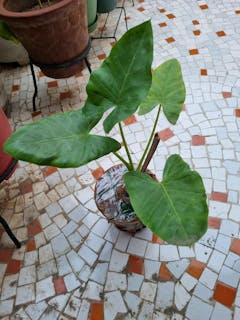Sinningia speciosa
Family
Gesneriaceae
Origin
Brazil
Description
Gloxinia flowering plants was considered a both perennial & annual. The perennial variety plants would bloom and then die back. After a period of dormancy, the plant would regrow, delighting its owner with a fresh flush of big, velvety flowers. The hybrid variety are bred to quickly produce a large number of blossoms. These gloxinias produce an outstanding display for about two months, but once the flowers fade, the plant rarely comes back because it invests all its energy into flowers rather than sturdy roots. Therefore, these plants are best grown as annuals.
The plant grow 15 to 30 cm (6 to 12 inches) in height and produce large, tubular or bell-shaped flowers surrounded by attractive foliage of a soft, velvety texture. The blooms are characterized by their richness and variety of colouring, which ranges from shades of blue and purple through pink and crimson to white. Gloxinias have tuberous roots and ovate or oblong leaves with toothed margins.
Gloxinia Multiflora mix bulbs bloom with rich, velvety flowers in many shades. Best suited for pots, indoors, or greenhouses. Flowers Feb–Apr (plains), Mar–May (hills). Plant Oct–Nov (plains & hills).
Environment
Gloxinia flower care is not too difficult. Place gloxinias in a bright area, out of direct sunlight. A location near a sunny window just outside the reach of the sun’s rays is ideal. Growing gloxinia houseplants thrive in average room temperatures of between 60-75 F. (16-24 C.).
Water gloxinias often enough to keep the soil moist. The leaves develop brown spots if they get wet, so apply the water directly to the soil under the leaves. If allowed to dry out, gloxinias go dormant
Use a high-phosphorus liquid plant food every two weeks on your flowering gloxinia houseplant. When growing gloxinia houseplants as annuals, they don’t need repotting.
Landscape
Begonia Tuberous Double is an excellent plant to grow in handing baskets and containers. The Begonia flower also provides an outstanding colorful display when planted in flower beds and borders.
Caution
All parts of the plant are poisonous. should not be ingested and may irritate sensitive skin.





















